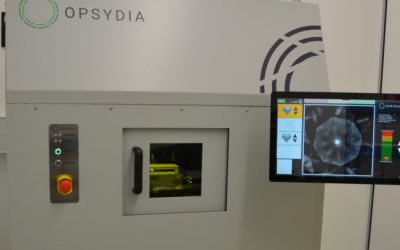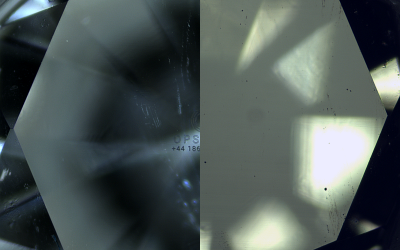University of Oxford spinout Opsydia has secured the first order for its Opsydia D5000 Diamond Marking System. The sale, to industry giant De Beers for their Lightbox Jewelry business, follows over a year of development work and is a major step forward for Opsydia’s...
Opsydia Technology & Applications
The explosive growth in AI and next generation computing applications places unsustainable demands on computing bandwidth, interconnect speeds and energy requirements. To continue to support Moore’s Law, all optical connectivity is required and will address these challenges directly. Opsydia is able to fabricate optical waveguides in transparent materials such as glass to address this need. The adaptive optic approach allows users to design systems with higher density and complexity than otherwise possible, moving from beachfront density to oceanfront possibilities.

Technology
Opsydia’s proprietary adaptive optics direct laser write waveguide technology provides high density, low-cost, advanced packaging optical connectivity in communications and semiconductors

Applications
Discover our adaptive optic direct laser writing system based on the groundbreaking work of our founding scientists, Professor Martin Booth and Professor Patrick Salter at the university of Oxford.
Latest News
Laser marking by Oxford University spinout transforms diamond security
Opsydia, a spinout from the University of Oxford, has unveiled ground-breaking new technology that will help address the risk of tampering and counterfeiting in the diamond sector. Using high precision lasers, Opsydia can make tiny marks, less than 1/50th of the size...






